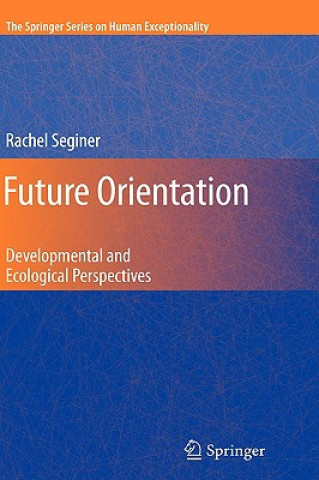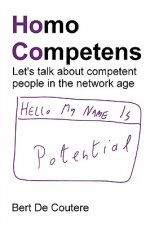
Doručení
Nákupní rádce





Nehodí se? Vůbec nevadí! U nás můžete do 30 dní vrátit
 Dárkový poukaz
V libovolné hodnotě
Dárkový poukaz
V libovolné hodnotě
S dárkovým poukazem nešlápnete vedle. Obdarovaný si za dárkový poukaz může vybrat cokoliv z naší nabídky.
Future Orientation
 Angličtina
Angličtina
 304 b
304 b
30 dní na vrácení zboží
Mohlo by vás také zajímat


As early as infancy, humans orient themselves to the future and continue to do so throughout life. Although the capacity for orienting oneself to the future is innate and manifested in infancy, the forms, content, and developmental function of future orientation change with age. In adolescence, when youths start considering adult tasks with greater interest and earnestness, weighing options and making decisions, future orientation serves as a basis for setting goals, charting plans, and outlining one s future life course.Today, the majority of youths are undergoing a double transition by which their personal coming of age takes place in times of rapid social change, thereby leading to a growing disparity between parents and adolescents with regard to the nature of adult roles. In this way, understanding how adolescents interweave the paths they chart for themselves with the paths prescribed by their traditional communities is particularly important.Consequently, the purpose of this book is to outline the theoretical framework and examine empirical research on the construction of adolescents future orientation in cultural context, especially focusing on minority youths.Conceptually, future orientation interfaces three theoretical approaches:Self-theory, Goal theory, Identity formationLike self-theory, future orientation focuses on the subjective construction of the self; like goal theory, it is situated in the future; and like identity formation, it examines how adolescents and emerging adults deal with such questions as, What do I want to make of myself? (Erikson). It has common elements with agency, self-regulation, personal striving, and intentionality, thereby emphasizing the positive rather than negative aspect of adolescents development and behavior.In essence, future orientation pertains to mental processes underlying anticipation of prospective events. Although the behavioral indications of such processes can be identified in infancy (Haith), a core definition of future orientation that applies particularly to adolescents and adults emphasizes higher mental processes and describes it as the images individuals have regarding their future as self-constructed and consciously represented.Future-orientation research has addressed itself to the description of the prospective life space constructed by individuals belonging to different age, gender, and ethnic groups and to its explanation in terms of personality factors, interpersonal context, and cultural milieu. To employ Bronfenbrenner s terms, future-orientation research has evolved from social-address to person-process explanations. Like other aspects of psychological functioning, future orientation is the outcome of universal processes shaped by cultural patterns. Therefore, this book will examine the links between future orientation and personality, gender, family, and other close relationships as well as the affect of future orientation on developmental outcomes in their cultural context. These issues and the conceptualization of future orientation are discussed in the book chapters.
Informace o knize
 Angličtina
Angličtina
Kategorie




 Jak nakupovat
Jak nakupovat































